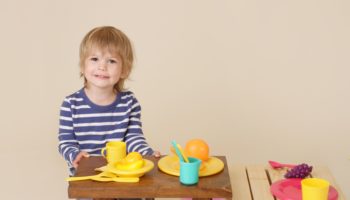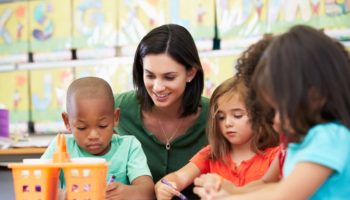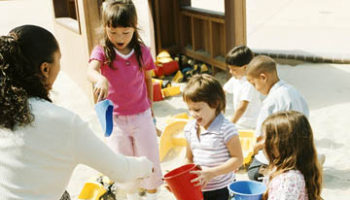Regina Wright
When children choose block play, they are not only building their creative imagination, they are using self-expression, mathematics, science, small and large muscles, and problem-solving skills. Block play promotes the development of spatial awareness and develops hand-eye coordination as children reach for, lift, move and build with blocks, strengthening their fingers, hands and arms.
A block interest center includes enough accessible floor space, unit blocks, and accessories from three categories, (small people, vehicles and animals) for three children to build sizeable, independent structures at the same time. Blocks and accessories are organized and stored on open labeled shelves with pictures or an outline of the blocks. A flat rug or other steady surface out of traffic areas are ideal platforms for block play.
To support children in their choice to interact with blocks ask yourself, “Are the children enjoying what they are doing?” “Are they following their own ideas?” “Are they challenging themselves through trial and error?” “Are they taking turns, sharing and building relationships with their peers?”
Conversations are important when teachers support block play. Teachers engage children by asking questions about what children are building, favorite shapes, sizes, and colors. These questions lead to a variety of topics, children are becoming critical thinkers, and developing vocabulary and language skills.
When teachers support block play, they point out math concepts such as more and less and short and tall. Children are also challenged to count and measure blocks. Teachers may also link written language to children’s block play by taking pictures and writing captions about what children said about their structures. Through block play there are a wealth of opportunities to explore.
Check out this video about why STEM education needs to have a strong block play component:
Foundations of Learning: Building STEM Skills


